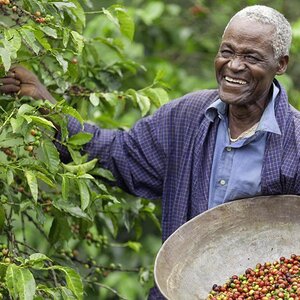Portfolios of the Poor: How the World's Poor Live on $2 a Day
If you weren't aware before that we are living through a revolution in finance, then the collapse of Lehman Brothers last September and subsequent events probably alerted you to the fact that something had changed. Many of us have been feeling, well, poorer since then, by a little or a lot, depending on where we lived and how our financial assets were invested. Those of us lucky enough to be reading this online are probably still doing okay and earning considerably more than the global poverty benchmark of $2 a day. Sure, we've had to adjust: move money around, spend less, and do without. But those at or below that $2 a day benchmark have been doing just that all along.
That was the big surprise for me in Portfolios of the Poor, by Daryl Collins, Jonathan Morduch, Stuart Rutherford, and Orlanda Ruthven. The result of a research project conducted between 1999 and 2005 in Bangladesh, India, and South Africa, the book examines "financial diaries" kept by some three hundred families at or below the global poverty line and finds that those families use a large and varied array of financial "instruments" — interest-free loans, funeral insurance, "money guards," microcredit loans, and so on — to put food on the table and keep a roof over their heads. Indeed, while many of us in the developed world spend an inordinate amount of time worrying about which way the Dow and S&P indices are headed, the hundreds of millions of people on the planet earning $2 a day have had to manage wildly fluctuating if modest income streams their entire lives — 50 cents one day, $5 the next day, and far too many days with no income at all. Managing life's needs on such an unpredictable cash flow requires a hardiness and level of financial creativity that would surprise, if not astonish, many of us.
The obvious conclusion from this state of affairs is that the global poor have a tremendous need for more reliable and flexible financial instruments — indeed, Portfolios of the Poor suggests that providing these tools to poor families might be a better way to lift them out of poverty over the long term than microcredit. Not that there's anything wrong with microcredit, say the authors; it's just that the poor have been underestimated as stewards of financial assets, and they would do much better for themselves if they had better tools to manage their assets.
Wait a minute, I can hear you say — there's something better than microgrants? To which Collins, et al would reply, microcredit institutions such as Grameen Bank are great but more microfinance services are needed to adequately address the banking needs of the world's poor. Of course microgrants have enabled millions of women to start and run small businesses for the first time and transformed the financial landscape for poor families across the globe, but they are geared to jumpstart entrepreneurial activity, not take care of daily survival needs. Microloans tend to arrive monthly, and the schedule is non-negotiable. A poor family's needs, in contrast, tend to spring up suddenly and often require immediate attention, so the only option for a family waiting for a microloan payment is to turn to more flexible but less reliable financial instruments such as a loan from a neighbor, a family member, or the shady character on the next block charging upwards of 300% annual compounded interest. (Since these loans tend to be repaid within the week, though, such high interest rates are more often than not a realistic risk for the poor.)
Another surprise for me was the authors' seeming emotional detachment from the plight of those they surveyed. Nowhere in book's pages do the researchers drop their stance of objectivity, put down their legal pads, and buy the family they're interviewing some food. (Although Collins does say that they gave gifts worth a month's income to participants at the end of the study. You can also visit the Web site for the book to view pictures that bring home just how difficult are the lives of the the study particpants.)
Instead, the authors — Collins is a senior associate at Bankable Frontiers Associates, Jonathan Morduch is professor of public policy and economics at New York University, Stuart Rutherford is the founder of microfinance company SafeSave in Bangladesh, and Orlanda Ruthven is an economic researcher at Impact Ltd. — methodically chart each family's expenses, emergencies, and incidental information to explain why some of their expenses are so excessive. (The research, originally the idea of Stuart Rutherford and David Hulme of the University of Manchester in England, was sponsored by two South African interests, FinMark Trust, an independent nonprofit philanthropy, and the Micro Finance Regulatory Council, a unit of the South African government, to explore how microfinance services could be expanded in that country. The Ford Foundation provided the funding necessary to turn the research into a book.)
Refreshingly, the book is written for a general audience, and includes lengthy appendices for data hounds who enjoy long sessions with a spreadsheet. Similarly, technical definitions are kept mercifully brief, and a two-page sidebar explains how the $2 a day benchmark was set by the United Nations, including conversion factors ("purchasing power parity") that assess specific types of purchases to explain why a dollar in Dhaka, Bangladesh, buys much more than it would in the United States — over and above monetary exchange rates.
Portfolios of the Poor is a must read for international development types and program officers at foundations that work internationally. But it also will help the general reader raise her global financial awareness a notch, and will probably make anyone who reads it a lot more grateful for what she has. At the same time, there's a clear opportunity — for funders, nonprofits, public-sector officials, and even for-profit enterprises — and maybe even a moral imperative implied in the book's pages: to provide and, at the same time, profit from providing financial services to billions of people who survive on $2 a day. Are we bold enough to rise to the challenge?








